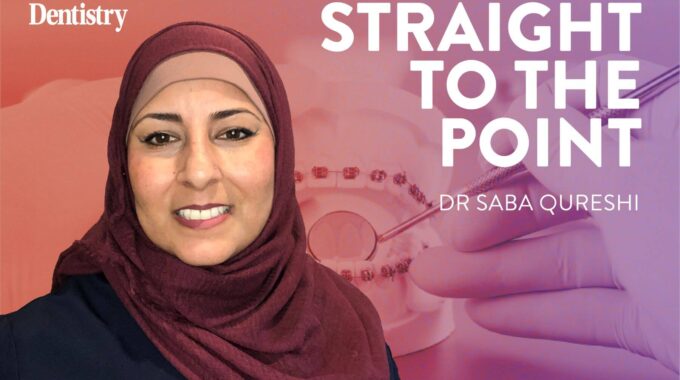Good oral hygiene is an important factor in maintaining dental health for everyone, however, it…

DIY Orthodontics: What’s all the fuss about?
In recent years, there has been a growing trend in people seeking “DIY-orthodontics”, which has been fuelled by the Coronavirus pandemic.
As a result of nationwide lockdowns and COVID compliant work protocols, patient access has been restricted, with limited availability of face-to-face appointments and increased waiting times. Add to this the ever-present pressures of social media to look good and endless zoom meetings, and you have a cohort of patients clambering to have their teeth straightened.
Whilst it’s great that this increased awareness of our smiles has led to people wanting to invest in straighter teeth or a brighter smile, the problem of supply and demand has reared its ugly head.
This is precisely where direct-to-consumer (DTC) aligner companies have flourished.
Some companies will ask for selfie-style photos of teeth for an initial assessment. Then an impression kit can be ordered so moulds can be taken in the comfort of your own home. Others offer the option of having a 3D scan done in one of their stores. Once processed, the aligners will arrive through the post without ever having to step foot in a dental practice and at a fraction of the cost of traditional orthodontic treatment.
Amazing, right? What’s not to like?
Let’s breakdown some of the problems associated with people accessing direct-to-consumer braces, in their current format:
- No clinical examination:
Prior to any sort of braces, patients should have a thorough clinical exam, which often includes radiographs, to determine their suitability for orthodontic treatment and address any underlying oral health issues. Orthodontic tooth movement is not without risk, and the periodontal condition, in particular, can deteriorate if left unchecked.
As it stands currently, none of the DTC companies are offering examinations by a dental professional prior to provision of aligners. Some advise that you should be “dentally fit” before starting, whilst others suggest that you share radiographs and BPE scores with them. However, the onus is on the client to share, so it would appear that many cases receive treatment without any consideration of dental health.
- Quality of impressions/scan:
Think back to when you first started your training as a dental professional. Remember the first impression you took? Wasn’t it hideous? Mastering impression-taking can take years, which makes me wonder about the quality of moulds sent in from people doing it at home in their kitchens. Inaccurate and distorted impressions mean that aligner fit is compromised. Poor fitting aligners can lead to gingival recession and periodontal problems.
As to the scans, it is not clear who oversees the scan quality once they have been taken.
- Limited treatment options:
DIY braces can only provide one option to straighten teeth, removable aligners, which aren’t ideal for everyone. A consultation with an Orthodontic Specialist or Dentist will enable a discussion of a variety of suitable options, with explanations of the pros and cons of each one. This also provides the opportunity for questions that may arise to be answered. Without this process, can it really be said that informed consent was obtained prior to treatment? I’m not convinced it can.
- Limited tooth movements:
DTC aligners relieve crowding by tipping teeth. In mild cases, this may produce an acceptable result. However, as we all know, teeth must only be moved within their biological limits…too much tipping can result in periodontal damage, gingival recession and opening of the bite. Experienced dental professionals are aware of these limits and will be able to monitor dental health throughout treatment, making adjustments to the treatment plan accordingly.
Also, as clinicians we understand how useful interproximal reduction can be in providing space for alignment and reduction of dark triangles, resulting in optimal aesthetics. There is no provision for this within DTC treatment.
- Unsupervised treatment:
Whatever brace patients may have it is important that they have regular contact with a suitably qualified dental professional, and aligners are no different. This allows clinicians to keep a check on both tooth movement and dental health. Unsupervised treatment can lead to less desirable results and therefore, a greater need for further treatment, and of course, cost to patients.
Of all the DIY-orthodontic companies operating in the UK, only a couple have named dentists on their website, so it is unclear who oversees treatment for the remaining groups. Without designated clinicians, how is one to know who is ultimately responsible for each case, and who to approach with any questions or concerns?
Thankfully, the BDA, GDC and CQC have been alerted of our concerns and the GDC recently released a statement on DTC orthodontic treatment stating that it “falls within the legal definition of dentistry so can only be performed by dentists and dental care professionals who are registered with the GDC” and highlighting three main points:
- There is no effective substitute for a physical, clinical examination as the foundation for assessment and the responsibility for judgement of suitability for treatment rests wholly with the prescribing dentist.
- Direct interaction between patient and is essential for providing patients the opportunity to ask questions, provide valid and informed consent, and be satisfied that the course of treatment proposed is likely to meet their needs and expectations.
- Patients must know the full name of the dental professional responsible for their treatment and be able to make direct contact with that person if they need to.
So, what do the public think of DIY-orthodontics? Recent studies have shown that the majority of DTC consumers are happy with their results. This means that DTC orthodontics is here to stay, whatever our reservations as a profession may be.
But hopefully, better regulation of DTC companies and more accountability will make for a safer environment for all potential orthodontic patients, and that’s what our main concern has always been.
